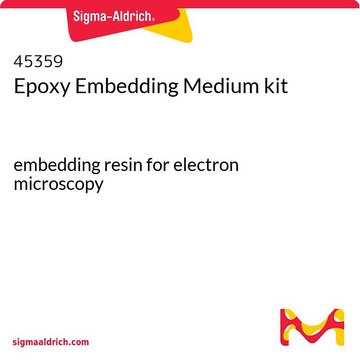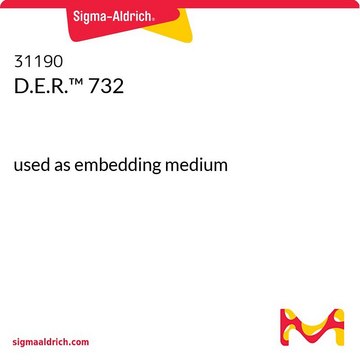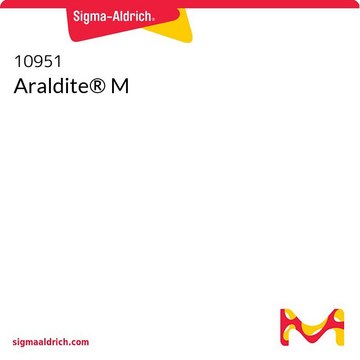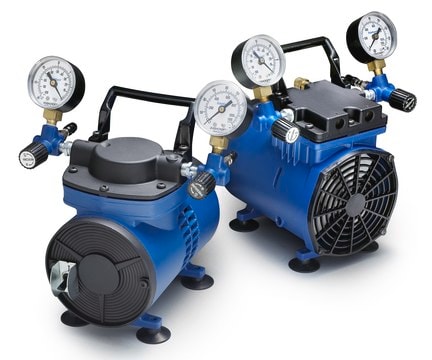44612
Durcupan™ ACM
single component B, hardener 964
Synonym(s):
ACM resins
Sign Into View Organizational & Contract Pricing
All Photos(1)
About This Item
Recommended Products
Quality Level
Looking for similar products? Visit Product Comparison Guide
Legal Information
Durcupan is a trademark of Sigma-Aldrich Chemie GmbH
related product
Product No.
Description
Pricing
Signal Word
Warning
Hazard Statements
Precautionary Statements
Hazard Classifications
Aquatic Chronic 4 - Eye Irrit. 2 - Skin Sens. 1
Storage Class Code
10 - Combustible liquids
WGK
WGK 1
Flash Point(F)
235.4 °F - closed cup
Flash Point(C)
113 °C - closed cup
Choose from one of the most recent versions:
Already Own This Product?
Find documentation for the products that you have recently purchased in the Document Library.
Daniela Boassa et al.
Cell chemical biology, 26(10), 1407-1416 (2019-08-06)
A protein-fragment complementation assay (PCA) for detecting and localizing intracellular protein-protein interactions (PPIs) was built by bisection of miniSOG, a fluorescent flavoprotein derived from the light, oxygen, voltage (LOV)-2 domain of Arabidopsis phototropin. When brought together by interacting proteins, the
Keun-Young Kim et al.
Cell reports, 29(3), 628-644 (2019-10-17)
The form and synaptic fine structure of melanopsin-expressing retinal ganglion cells, also called intrinsically photosensitive retinal ganglion cells (ipRGCs), were determined using a new membrane-targeted version of a genetic probe for correlated light and electron microscopy (CLEM). ipRGCs project to
Päivi Ylä-Anttila et al.
Autophagy, 11(10), 1833-1848 (2015-09-02)
RAB24 belongs to a family of small GTPases and has been implicated to function in autophagy. Here we confirm the intracellular localization of RAB24 to autophagic vacuoles with immuno electron microscopy and cell fractionation, and show that prenylation and guanine
Our team of scientists has experience in all areas of research including Life Science, Material Science, Chemical Synthesis, Chromatography, Analytical and many others.
Contact Technical Service









